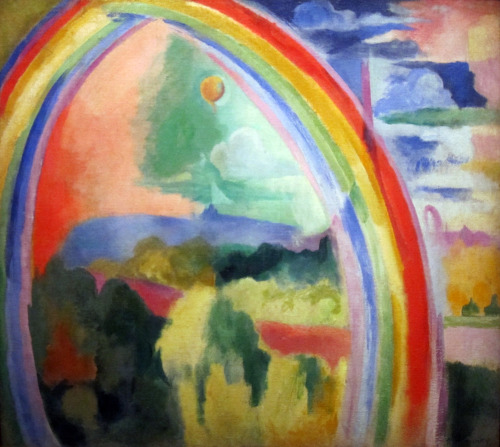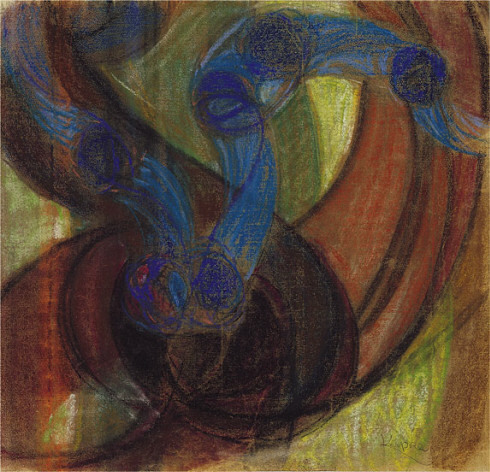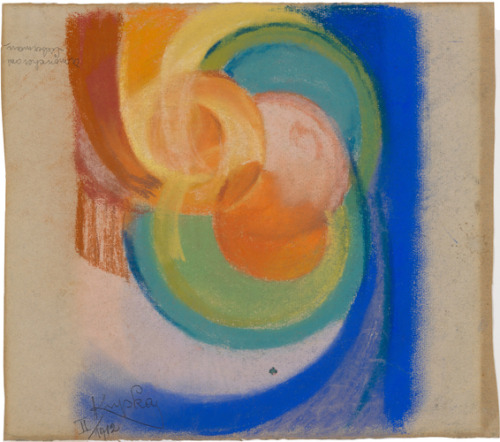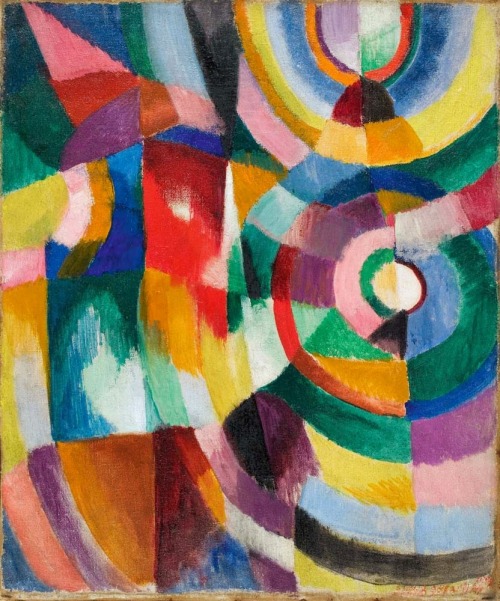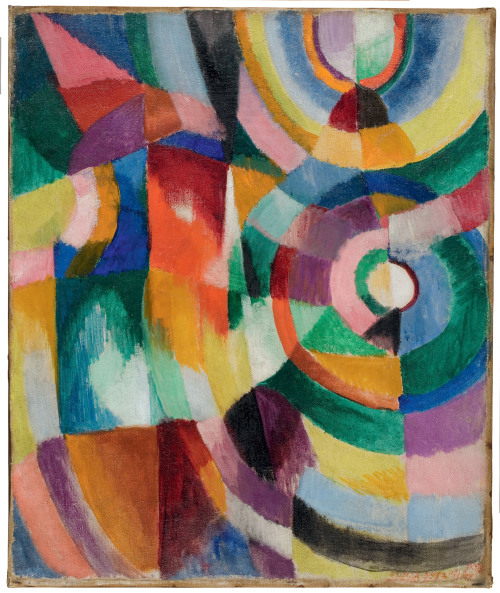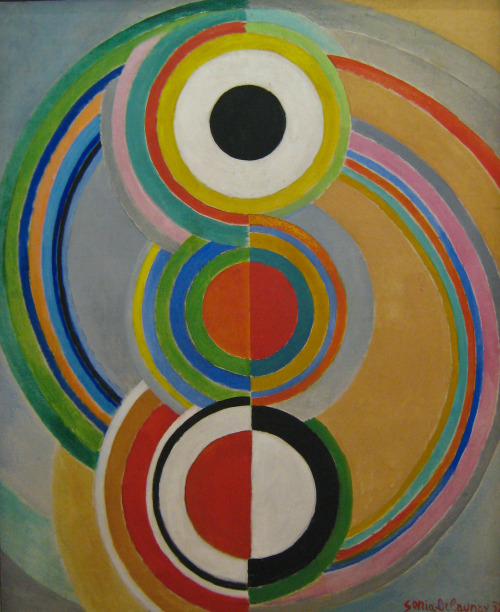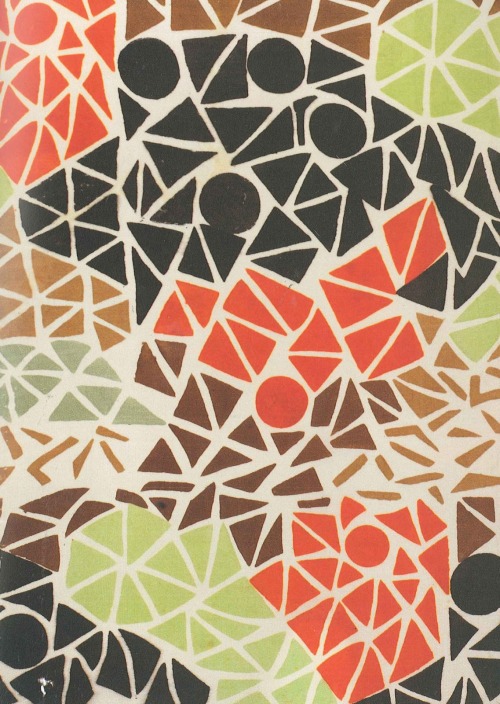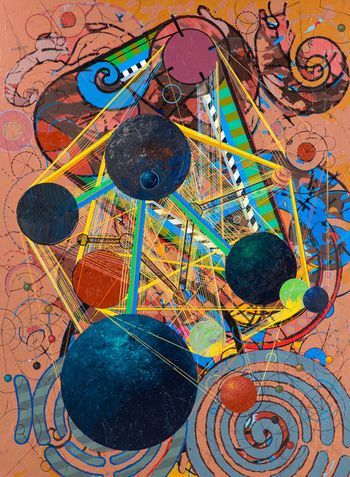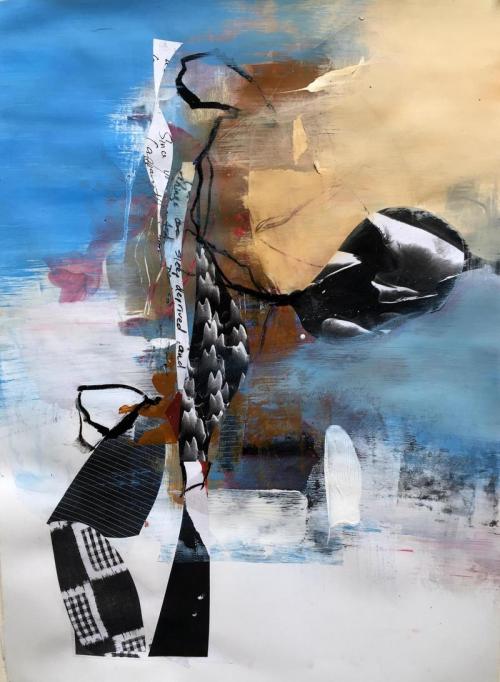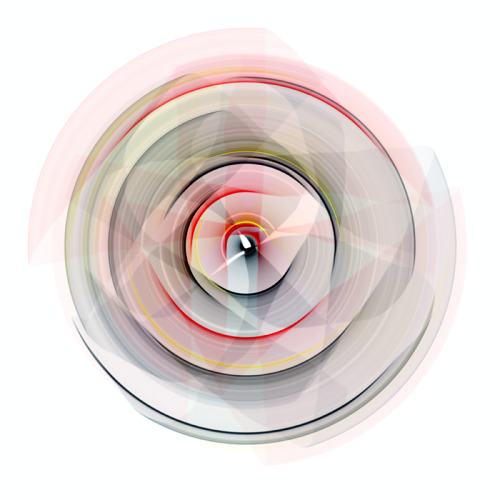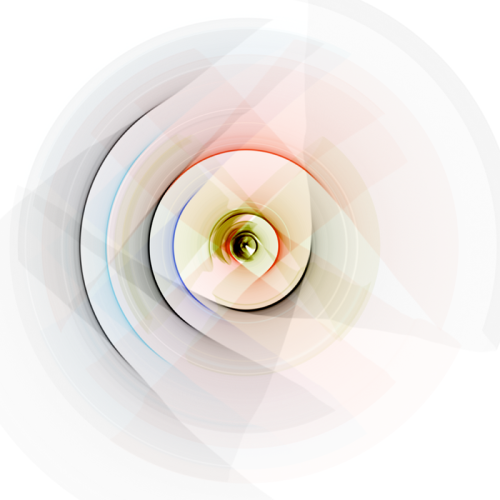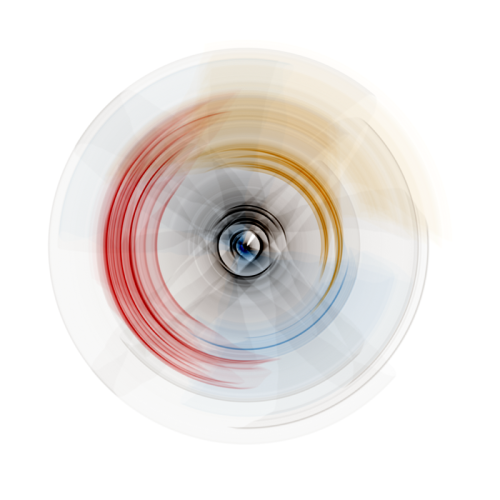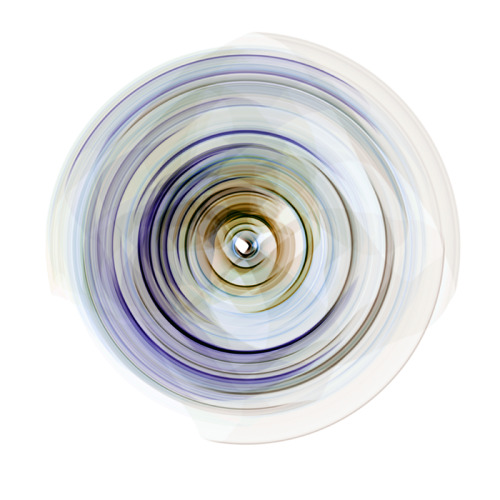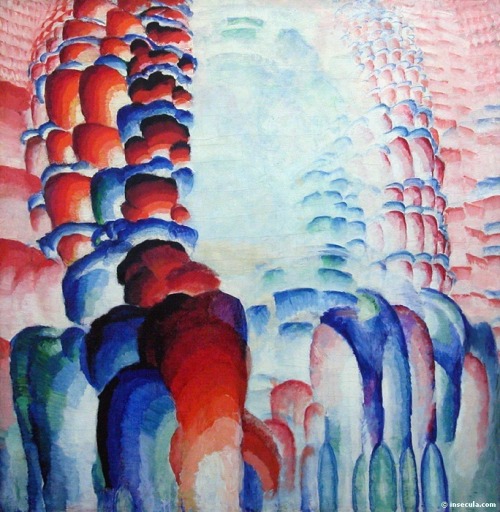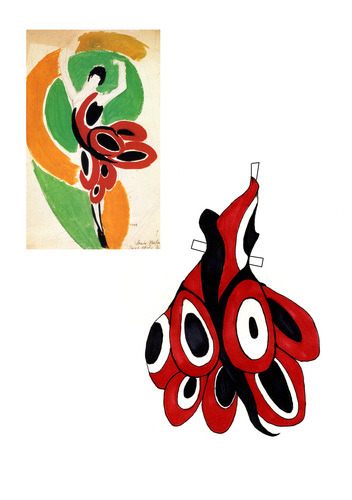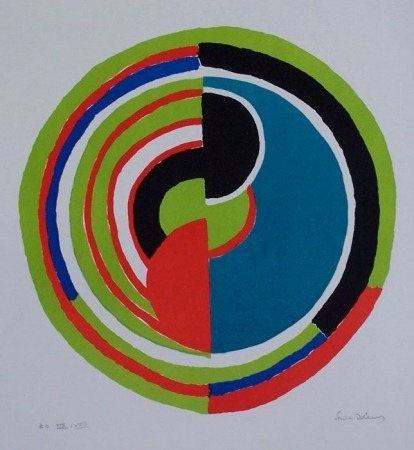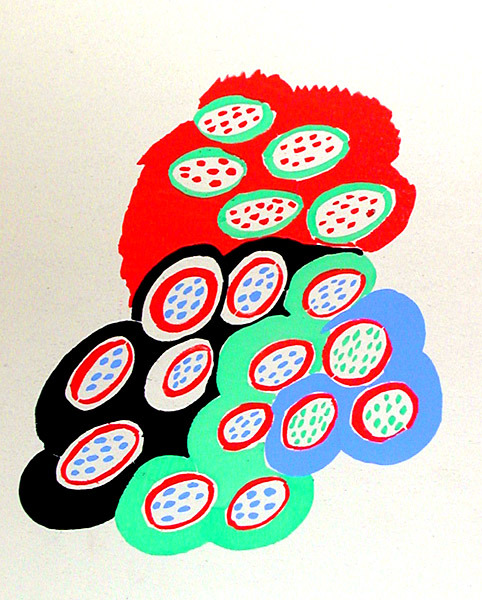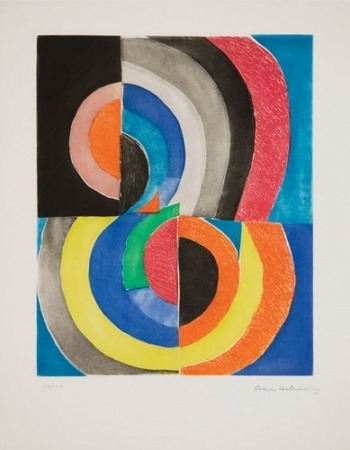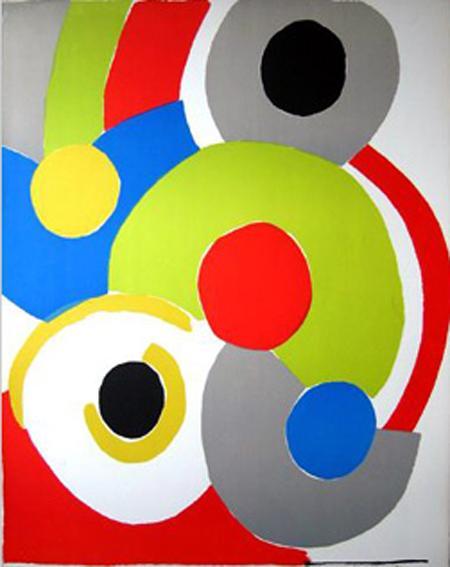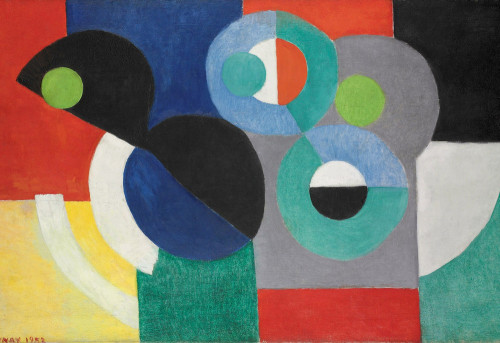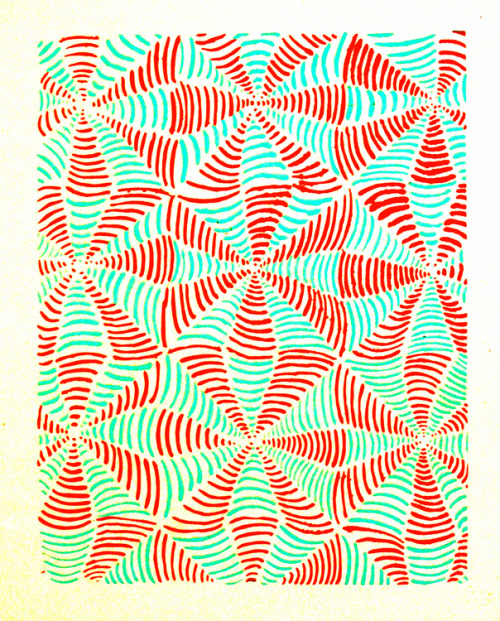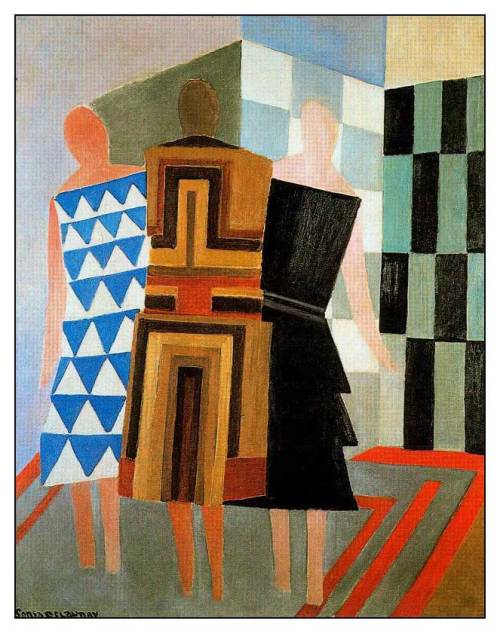#orphism
Himno Órfico XLV - A Dionisio Basareo

Ven, afortunado Dioniso, hijo del fuego, de taurina frente, Básaro y Baco, glorioso, todopoderoso, que disfrutas con las espadas, con la sangre y con las sagradas Ménades, dando gritos rituales por el Olimpo.
Estruendoso, delirante Baco, armado con el tirso, profundamente irritado, honrado por todas las deidades y por cuantos mortales habitan la tierra.
Ven, pues, bienaventurado danzante, trayéndonos a todos un gran gozo.
Study for Amorpha, Warm Chromatic and for Fugue in two colors; Study for The Fugue by František Kupka, 1910,Guggenheim Museum
The Solomon R. Guggenheim Foundation Peggy Guggenheim Collection, Venice, 1976 © 2016 Artists Rights Society (ARS), New York/ADAGP, Paris
Medium: Pastel on machine-made laid-line paper
Post link
Robert Delaunay - Portrait of Jean Metzinger (Man with a Tulip) 1906 HD
Robert #Delaunay - #Portrait of Jean #Metzinger (Man with a #Tulip) 1906 #painting #art #ζωγραφική #fauvism
Robert Delaunay – Portrait Jean Metzinger (Man with a Tulip) 1906
Man with a Tulip by Robert Delaunay (Portrait of Jean Metzinger) – 1906
Robert Delaunay was a French artist who, with his wife Sonia Delaunay and others, co-founded the Orphism art movement, noted for its use of strong colours and geometric shapes. His later works were more abstract. Wikipedia
Characteristics of Fauvism
The…

Study for “Disks of Newton” (“Disques de Newton”) by František Kupka, 1911,Guggenheim Museum
Solomon R. Guggenheim Museum, New York Gift, Mr. and Mrs. Alexander Liberman, 1994 © 2016 Artists Rights Society (ARS), New York / ADAGP, Paris
Medium: Pastel on paper
https://www.guggenheim.org/artwork/2387
Post link
COLOR SHE-RO
Love everything she created….
Sonia Delaunay (14 November 1885 – 5 December 1979) was a Ukrainian-born Russian artist, who formally trained in Russia and Germany and spent most of her working life in Paris. She co-founded the Orphismart movement, noted for its use of strong colors and geometric shapes . Check out some of her films below and most of all listen to Mile Davis Sketches of Spain.

Post link
Experiencing the Bauhaus while Black…
Mr. Robert Reed an African American Painter from Yale School of Art, where he received an M.F.A. in 1962. Despite his highly decorative academic life his experimental work using the bauhaus theory had fell into Oblivion until now…
Reed was born in 1938. He had only recently graduated high school when the Brown v. Board of Education of Topeka ruling was announced (but still did not put an end to segregation in Charlottesville, instead resulting in Virginia Senator Henry Byrd’s “Massive Resistance” policy). Reed then experienced major culture shock after he graduated from Morgan State University, a historically Black college, and started pursuing his BFA at Yale. He grew up in a Black community in segregated Virginia, and his move to Connecticut meant that he, unlike African Americans who were born and raised in northern states, had to learn as an adult to navigate a seemingly integrated, but no less racist establishment. The studio became Reed’s safe haven for freedom to invent and play, and his geometric abstractions allowed him to explore color adventurously while simultaneously creating visual metaphors of his personal experiences. Reed’s paintings address his nimble navigation of a world in which color bore especially oppressive meanings, and they do so via a coded visual language in which colors represent institutions and locales through which he made his complicated way, from the segregation-era South into the halls of the Ivy League. And it was through the formal tools of abstraction he learned through his Bauhaus professors at Yale that provided Reed the visual language to “hide in plain sight.”
Read article here https://bit.ly/3bzJalU
ACCOLADES
His work has been exhibited in America and Europe and has been included in group exhibits at
The Whitney Museum inaugural exhibition “America Is Hard to See”,
Albright-Knox Art Gallery, the Biennial of the Whitney Museum of American Art, the Hirshhorn Museum
The Walker Art Center, the Minneapolis Institute of Art,
The Yale University Art Gallery.
His solo exhibits include:
The Whitney Museum of American Art,
The Bayly Museum in Charlottesville, Virginia.
The Washburn Gallery in New York, the McIntosh Gallery in Atlanta and the Yale School of Art.
The list goes on….
Reed also authored several intensive studio programs including ACRE, SIX-Summer in Experiment, and The Site Program. He was the founder and director of the Institute for Studio Studies, which was associated with the Yale Summer Session in Auvillar, France, from 2009 until his death in 2014.
Mr. Reed lectured extensively and taught at Skidmore College in 1964 and the Minneapolis College of Art and Design, where he was head of the Foundation Studies Division. He was appointed to the Yale School of Art faculty in 1969 where he served for nearly 45 years as professor of painting/printmaking. He held several appointments as director of undergraduate studies in art at Yale starting in 1969 and also served as director of graduate studies in painting. From 1970 to 1975 he directed the art division of the Yale Summer School of Music and Art at Norfolk, Connecticut.
Reed was a National Council of Arts . He was awarded a grant from the National Endowment for the Arts. He was a recipient of the 2004 National Council of Art Administrators Distinguished Teaching of Art Award from the College Art Association, and was elected in 2009 to the National Academy Fellows in New York. He was awarded an honorary Doctor of Fine Arts degree from the Minneapolis College of Art and Design. He served as a board member for the McDowell Colony, the Virginia Center for Creative Arts, The Silvermine Guild Center for the Arts, Second Street Gallery and the Lyme Academy of Art.
Reed received numerous awards including the National Council of Arts Administrators, the College Art Association’s Distinguished teaching award, the William DeVane teaching award, National Academy Fellow and was a recipient of a grant from the National Endowment for the Arts.
Post link
Study for Amorpha, Warm Chromatic and for Fugue in two colors; Study for The Fugue by František Kupka, 1910,Guggenheim Museum
The Solomon R. Guggenheim Foundation Peggy Guggenheim Collection, Venice, 1976 © 2016 Artists Rights Society (ARS), New York/ADAGP, Paris
Medium: Pastel on machine-made laid-line paper
Post link
Piano Keys Lake, 1905,Frantisek Kupka
Medium: oil,canvas
https://www.wikiart.org/en/frantisek-kupka/piano-keys-lake-1905
Post link
Study for Amorpha, Warm Chromatic and for Fugue in two colors; Study for The Fugue by František Kupka, 1910,Guggenheim Museum
The Solomon R. Guggenheim Foundation Peggy Guggenheim Collection, Venice, 1976 © 2016 Artists Rights Society (ARS), New York/ADAGP, Paris
Medium: Pastel on machine-made laid-line paper
Post link
Piano Keys Lake, 1905,Frantisek Kupka
Medium: oil,canvashttps://www.wikiart.org/en/frantisek-kupka/piano-keys-lake-1905
Post link
Piano Keys Lake, 1905,Frantisek Kupka
Medium: oil,canvashttps://www.wikiart.org/en/frantisek-kupka/piano-keys-lake-1905
Post link


